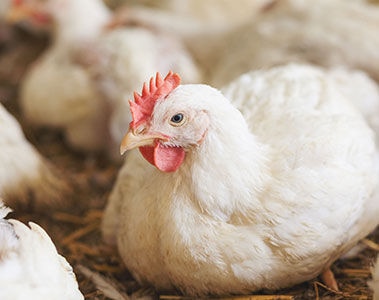
-
Global/EN
- Global
- North America
- Latin America
Vitamin D has long been recognized as essential to the skeletal system by maintaining calcium and phosphorus homeostasis. In 2019, we began examining research on the additional benefits of vitamin D. In the newly published white paper, Beyond Bone – The importance of vitamin D for immune function in swine, I outlined studies that begin to build the case of how vitamin D may play a larger role in supporting the immune systems in pigs. The information below highlights key takeaways from the paper.
The role of vitamin D in supporting the immune response is well studied in humans. Epidemiological studies with humans have associated poor vitamin D status with an increased risk of several diseases, including autoimmune diseases.3 dsm-firmenich has a product that contains 25-OH D3 (Hy•D®), which provides a more biologically efficient form of the vitamin that doesn’t require the initial liver hydroxylation step and can be administered through feed or water. This ensures optimal levels of active vitamin D in the pig, because 25-OH D3 is the most prevalent circulating form of vitamin D and considered the best indicator of vitamin D status.
The chart below shows the effects of 25-OH D3 on total cell number, viability and phagocytic activity of immune cells in both blood and bronchoalveolar compartments of weaned pigs.
Click here for the complete white paper.
1Baeke, F., T. Takiishi, H. Korf, C. Gysemans, and C. Mathieu. (2010) Vitamin D: modulator of the immune system. Current Opinion in Pharmacology, 10(4), 482–496.
2Humphrey, B., J. Zhao and R. Faris. (2019) Review: Link between intestinal immunity and practical approaches to swine nutrition. The Animal Consortium. 1-9.
3Peelen, E., S. Knippenberg, A.H. Muris, M. Thewissen, J. Smolders, J.W.C. Tervaert, R. Hupperts and J. Damoiseaux. (2011) Effects of vitamin D on the peripheral adaptive immune system: A review. Autoimmunity Review. 10, 733-743.
4Konowalchuk, J. D., A. M. Riegea, M. D. Kiemele, D. C. Ayres and D. R. Barreda. (2013) Modulation of weanling pig cellular immunity in response to diet supplementation with 25-hydroxyvitamin D3. Veterinary Immunology and Immunopathology. 155(2), 57-66.
Hy•D is a trademark of dsm-firmenich Animal Nutrition & Health.
Photo courtesy of the National Pork Board, Des Moines, Iowa.
29 October 2020
Sara Hough is a senior regional technical services veterinarian for swine in North America. She holds a Doctor of Veterinary Medicine Degree obtained at North Carolina State University College of Veterinary Medicine.
Sara has 10+ years experience in the North American swine industry and is involved in many industry organizations. Since joining dsm-firmenich in 2019, she has been focused on how micronutrients support the immune system, and influence animal performance and lifetime productivity.
We detected that you are visitng this page from United States. Therefore we are redirecting you to the localized version.